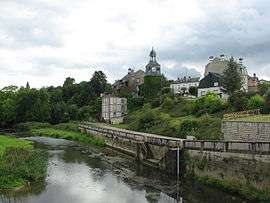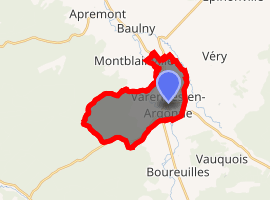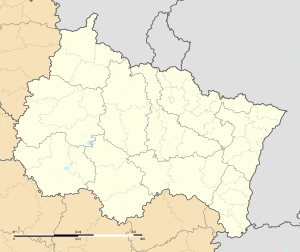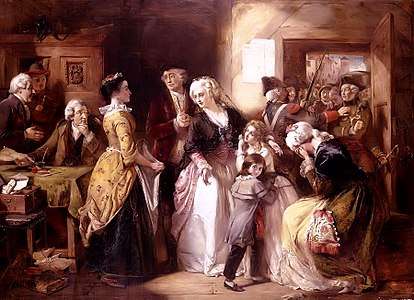Varennes-en-Argonne
Varennes-en-Argonne or simply Varennes (German: Wöringen) is a commune in the Meuse department in Grand Est , in northeastern France.
Varennes-en-Argonne | |
|---|---|
 Tower Louis XVI and the river Aire | |
.svg.png) Coat of arms | |
Location of Varennes-en-Argonne 
| |
 Varennes-en-Argonne  Varennes-en-Argonne | |
| Coordinates: 49°13′37″N 5°02′06″E | |
| Country | France |
| Region | Grand Est |
| Department | Meuse |
| Arrondissement | Verdun |
| Canton | Clermont-en-Argonne |
| Intercommunality | Montfaucon - Varennes en Argonne |
| Government | |
| • Mayor (2008–2014) | Jean-Marie Lambert |
| Area 1 | 11.81 km2 (4.56 sq mi) |
| Population (2017-01-01)[1] | 655 |
| • Density | 55/km2 (140/sq mi) |
| Time zone | UTC+01:00 (CET) |
| • Summer (DST) | UTC+02:00 (CEST) |
| INSEE/Postal code | 55527 /55270 |
| Elevation | 144–264 m (472–866 ft) (avg. 195 m or 640 ft) |
| 1 French Land Register data, which excludes lakes, ponds, glaciers > 1 km2 (0.386 sq mi or 247 acres) and river estuaries. | |
Geography
Varennes-en-Argonne lies on the river Aire to the northeast of Sainte-Menehould, near Verdun.
History
It was the scene of the Flight to Varennes. In June 1791 Louis XVI, with his immediate family, made a dash for the nearest friendly border, that of the Austrian Netherlands in modern Belgium (Queen Marie-Antoinette being a sister to the Austrian emperor, Leopold II). But in Varennes Louis and his family were arrested, by Citizen Drouet, the local postmaster, who had been alerted by a message received from nearby Sainte-Menehould. It is said that at Sainte-Menehould, where the escaping party had spent the previous night, a merchant alerted the town authorities of their presence after recognizing the King's face on an Assignat, as Louis tried to buy something from a shop. Once more the royal family returned to the Tuileries in humiliating captivity, and Louis and Marie-Antoinette were subsequently guillotined in 1793.
Located in the Zone rouge, Varennes was completely destroyed during the First World War but was reconstructed afterwards. The Pennsylvania Memorial, a monument for volunteers from 28th Division Pennsylvania in the First World War, was erected in Varennes during the Interwar period.
 Arrest of Louis XVI and his Family in Varennes, 1791.
Arrest of Louis XVI and his Family in Varennes, 1791. Ruins of Varennes in 1918.
Ruins of Varennes in 1918.
Points of interest
See also
References
- "Populations légales 2017". INSEE. Retrieved 6 January 2020.
| Wikimedia Commons has media related to Varennes-en-Argonne. |